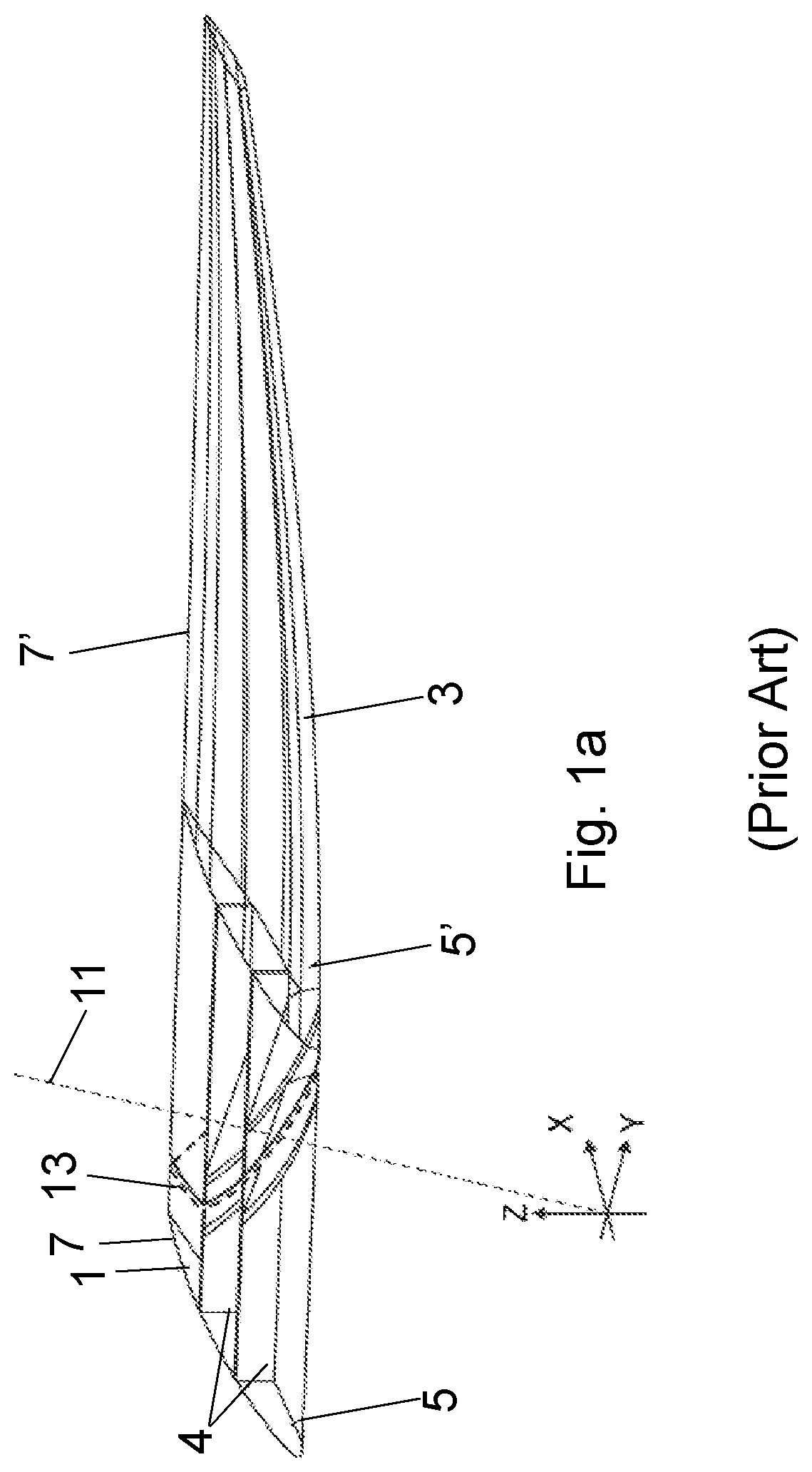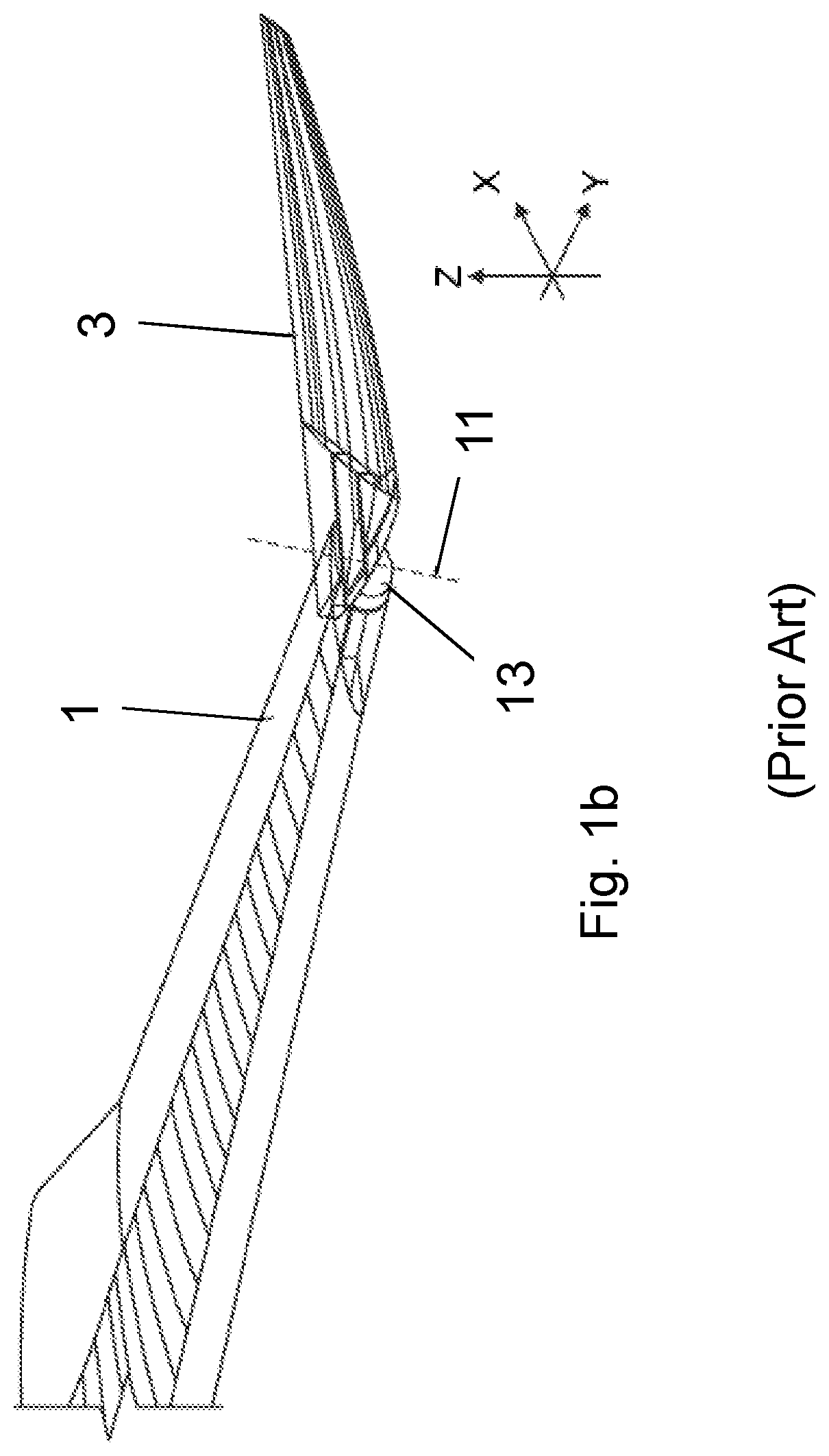Curved interface between an outer end of a wing and a moveable wing tip device
a technology of wing tip and wing, which is applied in the direction of wing adjustment, heat reduction structure, aircraft components, etc., can solve the problems of affecting the sealing of the interface between the fixed wing and the wing tip device, and the effective limitation of the aircraft span
- Summary
- Abstract
- Description
- Claims
- Application Information
AI Technical Summary
Benefits of technology
Problems solved by technology
Method used
Image
Examples
Embodiment Construction
[0054]FIG. 1a is a perspective view of a fixed wing 1 and a wing tip device 3 on an aircraft shown in WO2015 / 150835. In summary, the wing tip device 3 is moveable between a flight configuration (FIG. 1a) and a ground configuration (FIG. 1b). In the flight configuration, the leading and trailing edges 5′, 7′ of the wing tip device 3 are continuations of the leading and trailing edges 5, 7 of the fixed wing 1. Furthermore, the upper and lower surfaces of the wing tip device 3 are continuations of the upper and lower surfaces of the fixed wing 1.
[0055]The wing tip device 3 is placed in the flight configuration for flight. In the flight configuration, the wing tip device 3 thus increases the span of the aircraft (thereby providing beneficial aerodynamic effects, for example, reducing the component of induced drag and increasing the lift). In principle, it would be desirable to maintain this large span at all times and simply have a large fixed wing. However, the maximum aircraft span is...
PUM
 Login to View More
Login to View More Abstract
Description
Claims
Application Information
 Login to View More
Login to View More - R&D
- Intellectual Property
- Life Sciences
- Materials
- Tech Scout
- Unparalleled Data Quality
- Higher Quality Content
- 60% Fewer Hallucinations
Browse by: Latest US Patents, China's latest patents, Technical Efficacy Thesaurus, Application Domain, Technology Topic, Popular Technical Reports.
© 2025 PatSnap. All rights reserved.Legal|Privacy policy|Modern Slavery Act Transparency Statement|Sitemap|About US| Contact US: help@patsnap.com



